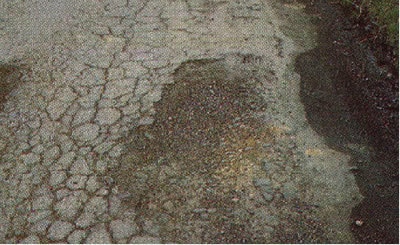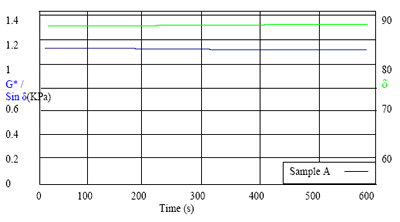One of the key factors in making a durable road surface is the nature of the asphalt cement. Asphalt is a bituminous product taken from the residue of cracked crude oils and is largely viscous in nature unless modified.
Problems With Asphalt Surfaces
The two main problems that occur in asphalt concrete (tarmac) surfaces are that wheel ruts are formed when the material is too soft, or that the surface cracks when too hard.
Climate Considerations In Asphalt Selection
The viscosity of asphalt is highly temperature dependent and so any road surface needs to be constructed from a suitable grade of asphalt for the climate in that region. In the Strategic Highway Research Program (SHRP), methods were optimized to assess and grade asphalts so that they could be valued and sold appropriately as SUPERPAVE™ products. The SHRP testing regime contains several steps, this being only one of them.
Rheological Assessment Of Asphalt
Asphalt is a particularly difficult material to assess rheologically, as it is highly temperature dependent; the viscosity varies by 20% for 1ºC temperature change! Also it is highly viscous, has a poor thermal conductivity and polymer modified bitumens can be thixotropic.
Prewarming Asphalt Samples For Testing
These problems were investigated by the SHRP team and the recommendations were to pre-warm the asphalt and load it whilst hot to ensure good contact of the sample with the plates and to eliminate any shear history.
Controlling Sample Temperature
Also the poor thermal conductivity of the sample required the development of a specialized cell for enhanced temperature control. This cell is based on the immersion method for temperature control and was developed in conjunction with the initial SHRP project. In the immersion cell, the sample and both upper and lower measuring systems are immersed in the temperature controlling fluid. This gives unprecedented temperature control, with temperature gradients of <0.1 ºC through the sample. This cell now forms part of the standard asphalt testing method in the AASHTO system.

Figure 1. Rutted road surface due to too soft asphalt binders being used.

Figure 2. Cracked road surface due to too hard asphalt binders being used.
Test Procedure
The SHRP testing regime is quite complicated and too long to describe in detail in this article. This test is initially carried out on the original binder and then on rolling thin film oven test (RTFO) residue and the pressure aged vessel (PAV) binder, each with different temperatures and pass criteria.

Figure 3. Test results for paving grade asphalt.
Interpretation Of Results
In the results shown in Figure 3, Sample A showed a G*/sin δ value exceeding 1Kpa at 58ºC and so this product would qualify to become paving grade PG58 and PG52.
Conclusion
The grade of asphalts can be accurately quantified using a Bohlin CVO rheometer with an ADS immersion jacket, or with a Bohlin DSR rheometer.
Measurement Conditions
| Sample |
Asphalt cement |
| Geometry |
PP 25 mm for Original Binder or PP8 for Pressure aging vessel sample, with an ADS immersion cell |
| Temperature |
As described in the SHRP method (45, 52, 58oC...) |
| Sheer Strain |
12% for Original Binder, 1% for Pressure Aged Vessel |
| Frequency |
10 rads/s |

This information has been sourced, reviewed and adapted from materials provided by Malvern Panalytical.
For more information on this source, please visit Malvern Panalytical.